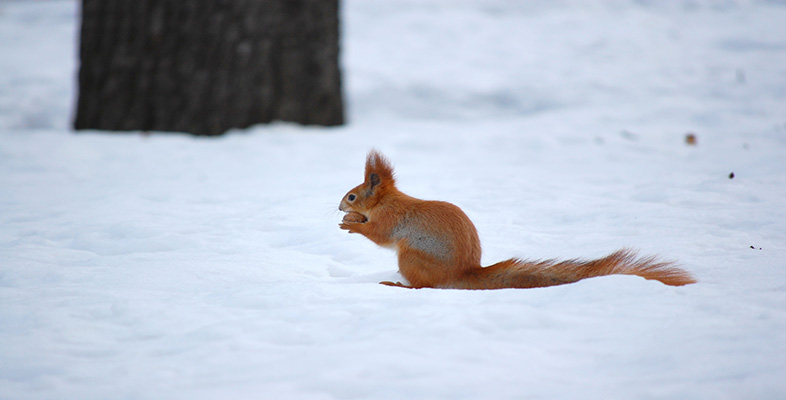1.5 Strategies 3 and 4: juvenile survival and migration
1.5.1 Juvenile survival
For organisms that are able to complete their life cycles within a year there is the possibility of spending the winter in various juvenile stages. We have already considered annual plants, the adults of which may die before the onset of winter, with seed not germinating until the spring. Surviving the winter as seeds has the advantages that the seeds are robust, and because they have a low water content they are less affected by freezing temperatures. Disadvantages of this strategy include the possibility that the seeds may be consumed by ground-feeding herbivores and that newly germinating plants may lose out in competition with annuals that germinated in the previous autumn.
Butterflies are good examples of insects that survive the winter in a variety of immature stages. Indeed, in Britain, different butterfly species overwinter at each of the juvenile stages of the life cycle, i.e. as eggs, larvae and pupae, or as adults.
Table 1.2 lists the numbers of species, categorised by butterfly family, that overwinter in each of these four stages in Britain.
| Juvenile stage | Adult | |||
|---|---|---|---|---|
| Butterfly family | Egg | Larva | Pupa | |
| Satyridae | 0 | 11 | 0 | 0 |
| Nymphalidae | 1 | 9 | 0 | 4 |
| Lycaenidae | 6 | 7 | 2 | 0 |
| Pieridae | 0 | 0 | 5 | 1 |
| Hesperiidae | 2 | 5 | 1 | 0 |
| other | 0 | 0 | 2 | 0 |
| total | 9 | 32 | 10 | 5 |
Question 7
Based on Table 1.2, what is the predominant overwintering stage of butterflies?
Answer
Larvae (caterpillars), occurring in 32 out of 56 species (57%).
There appear to be some phylogenetic patterns in overwintering strategy amongst the butterflies, i.e. some butterfly families in Britain are restricted to certain strategies.
Question 8
Which butterfly families are restricted to overwintering at one immature stage in Britain?
Answer
The Satyridae (browns) only overwinter as larvae and the Pieridae (whites) overwinter as pupae.
In other families, such as the Lycaenidae (blues) and Hesperiidae (skippers), there is a mixture of overwintering strategies. However, these butterfly families are large and heterogeneous, and more careful inspection of subfamilies indicates phylogenetic patterns. For example, most hairstreaks (family Lycaenidae) overwinter as eggs. Across families, it seems there are common factors in the types of species that overwinter as a particular stage. For example, all of the species that overwinter as eggs have only one generation a year and are on the wing (and therefore breeding) later in the year, mainly July and August.
